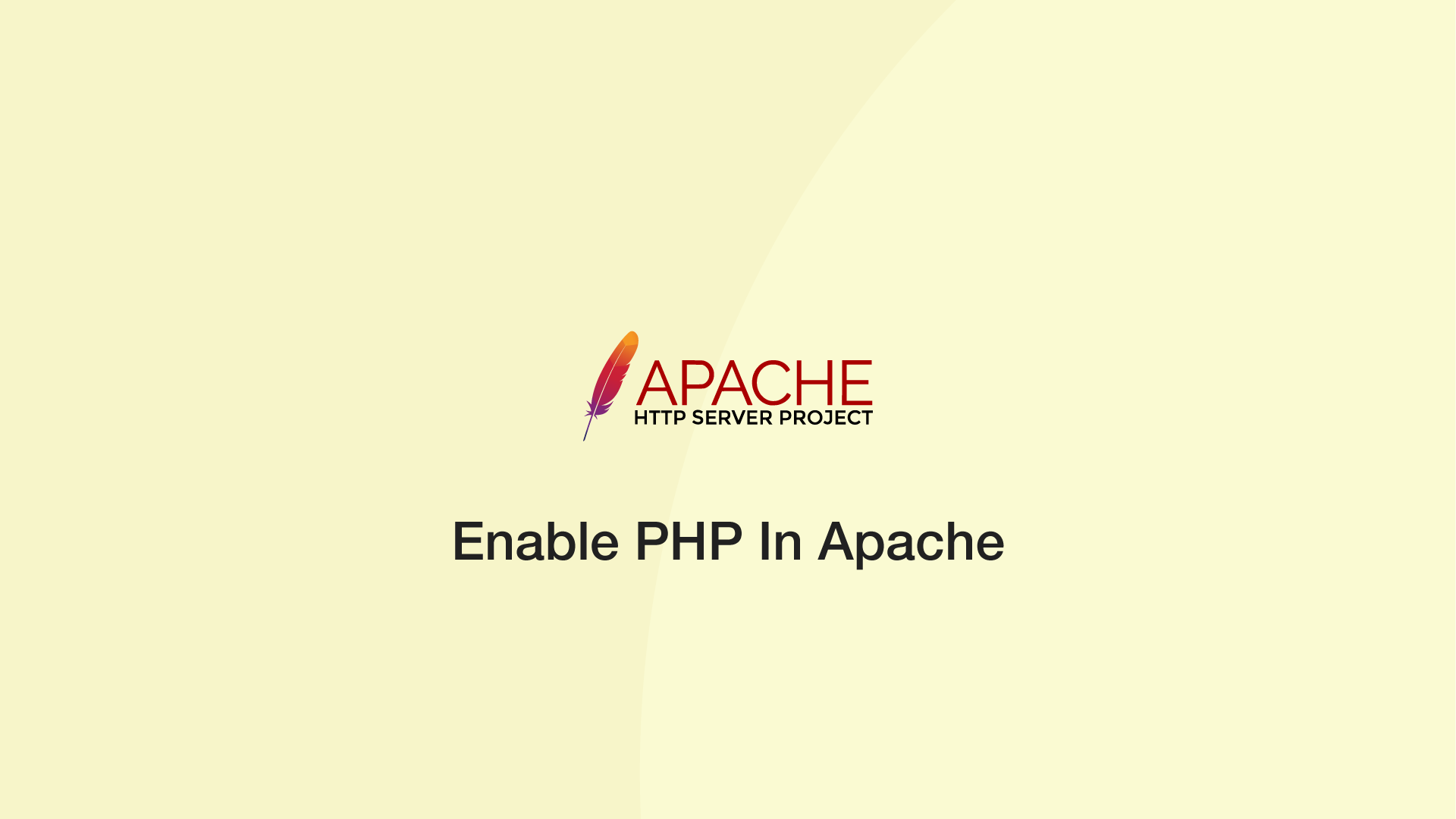

There are a plethora of books on PHP 7 and 8. Referencesįor more in depth information see the php.net documentation. Pointing your browser to will display the values of various PHP configuration parameters. You can save the content in a file phpinfo.php and place it under the DocumentRoot directory of the Apache2 Web server. However, if you have other PHP versions like PHP7 or PHP8.1, you can use either the following to enable PHP: sudo a2enmod php7 sudo a2enmod php8. To verify your installation, you can run the following PHP phpinfo script: The last command will reload the Apache2 configuration. Once you have installed the PHP related packages and enabled the Apache PHP module, you should restart the Apache2 Web server to run PHP scripts, by running the following command: sudo systemctl restart rvice If they do not exist, you can enable the module using the a2enmod command.

Please verify if the files /etc/apache2/mods-enabled/php8.*.conf and /etc/apache2/mods-enabled/php8.*.load exist. If you have installed the php-cli package, you can run PHP scripts at a terminal prompt.īy default, when libapache2-mod-php is installed, the Apache 2 Web server is configured to run PHP scripts using this module. If you have installed the libapache2-mod-php or php-cgi packages, you can run PHP scripts from your web browser.
#Apache php install#
Similarly, to use PostgreSQL with PHP you should install the php-pgsql package: sudo apt install php-pgsql
#Apache php how to#
To use MySQL with PHP you should install the php-mysql package, like so: sudo apt install php-mysql Installation Instructions for how to install Homebrew itself can be found on the official Homebrew website. To accomplish this, you should install the php-cgi package via this command: sudo apt install php-cgi You can also execute PHP scripts without installing the Apache PHP module. To install php-cli you can enter the following command: sudo apt install php-cli To run PHP scripts at a terminal prompt you should install the php-cli package. You can run PHP scripts at a terminal prompt. To install PHP and the Apache PHP module you can enter the following command at a terminal prompt: sudo apt install php libapache2-mod-php To run PHP scripts at a terminal prompt you should. To install PHP and the Apache PHP module you can enter the following command at a terminal prompt: sudo apt install php libapache2-mod-php. Unlike Python, which is installed in the base system, PHP must be added. Unlike Python, which is installed in the base system, PHP must be added. You can refer to the Apache2 and MySQL sections in this document to install and configure Apache2 and MySQL respectively. This section assumes you have installed and configured Apache2 Web Server and MySQL Database Server. This section explains how to install and configure PHP in an Ubuntu System with Apache2 and MySQL. PHP is a general-purpose scripting language suited for Web development. To manage these VMs, Vagrant makes this very easy. In these cases, it is best to use a VM with the same OS as your production servers.

#Apache php windows#
Youre probably not using EasyPHP WAMP in production, are you Or Windows for that matter. Meaning PHP 5.3, 5.4, and 5.5 have all reached the end of life they are no longer supported with security updates.Multi-node configuration with Docker-Composeĭistributed Replicated Block Device (DRBD) 2,686 2 25 35 Honestly, the best way Ive found for emulating production environments is to use Vagrant. It is a server-side scripting language that can be embedded in HTML.Ĭurrently, there are three supported versions of PHP, i.e PHP 5.6, 7.0, and 8.0. PHP (recursive acronym for PHP: Hypertext Preprocessor) is an open-source, popular general-purpose scripting language that is widely-used and best suited for developing websites and web-based applications. Remove test database and access to it? yħ.
#Apache php password#


 0 kommentar(er)
0 kommentar(er)
